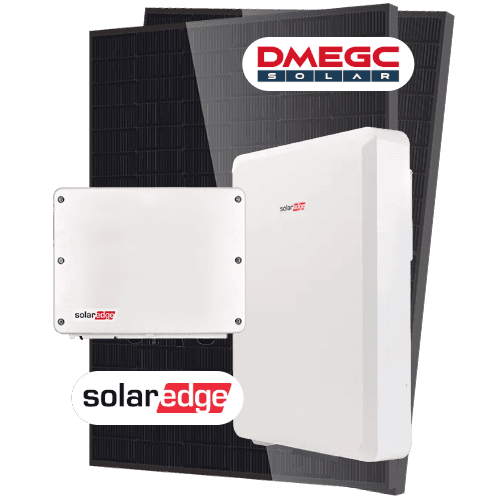
Our Installs Rated 4.6
Aug 22, 2024
Hello Solar Enthusiasts! 🌞
When talking about solar panel systems, the concept of "solar oversizing" might sound like a head scratcher. Fear not! In this blog, we'll unravel this technical term with a friendly, conversational approach. We'll explain what solar oversizing is, and why it can be beneficial for you as a homeowner considering installing a solar panel system.
What is Solar Oversizing?
In simple terms, solar oversizing involves installing more solar panels than what the inverter can handle at its peak capacity. This process leverages a concept known as "clipping."
What on Earth is Clipping?
Glad you asked! Clipping occurs when your solar panels generate more power than the inverter can process. The excess energy is essentially 'clipped off,' which means it’s not used. But wait! Don't let this scare you. The impact isn't as huge as it seems.
Why is Clipping Not a Big Deal?
While clipping might seem like wasted potential, it's actually an advantage. Here's why:
Longer High-Efficiency Operation: Due to clipping, your system spends more time operating at high efficiency.
More Energy Over Time: Even with some energy being clipped, the overall energy production can still be higher compared to a perfectly matched system.
For the data lovers out there, clipping graphs show that the increased energy production from an oversized system outweighs the loss from clipping.
Efficiency and Other Sweet Perks
Higher Efficiency
By oversizing your solar system, you might notice an overall increase in efficiency. Your panels are working longer and harder, maximising the return on your investment.
DC-Coupled Battery
A neat little trick, especially useful if you're thinking of adding a DC-coupled battery, is that it can be charged from the solar output before clipping occurs.
Benefits of Solar Oversizing
Lower Costs
Due to market competition and technological advancements, the cost of adding extra panels has significantly reduced. More panels often mean a greater return on investment over the system’s lifespan.
Smoother DNO Applications
In the UK, Distribution Network Operators (DNOs) manage the installation of solar systems. For systems generating under 3.6kW, the application process is often quicker and easier. Oversizing lets you use a lower-rated inverter while still generating more power from your panels.
Charging DC-Coupled Batteries
Even with clipping, a DC-coupled battery can still be charged because it receives power directly from the panels before the inverter does its thing. So, you’re effectively “saving” some of that clipped energy.
Things to Consider
Limited Export Potential
Your ability to export excess energy back to the grid might be restricted based on your network's limits.
Limited Discharge Capacity
With a smaller inverter, the system’s capacity to discharge energy might also be limited.
Long-Term Plans
If you're thinking ahead, note that oversizing might not be future-proof. If your energy needs grow, you may require a larger system down the road.
Recommendations and Options
When deciding on the inverter, one amazing option we recommend is FoxESS. These inverters are known for their superior discharge capabilities, making them a great fit for oversized systems.
Alternative Options
There are other inverters and system designs to consider. Each comes with its pros and cons. Make sure to consider efficiency ratings, costs, and your long-term energy needs.
Understand Your Usage and Set Limits
Refer to our blog posts on DNOs and Size/Export Limits & Typical Energy Usages & Recommendations to get a fuller picture of how solar oversizing can work for you.
Conclusion
Solar oversizing may sound complex, but it’s a strategy that can offer significant benefits, from efficiency gains to cost savings. It’s a smart way to maximise your solar panel potential—not just today, but for years to come. Thanks for tagging along on this deep dive into solar oversizing! 🌍💡
Thinking about going solar or have questions? Drop us a line at Solar Panels London!
Stay sunny, The Solar Panels London Team 🌞




